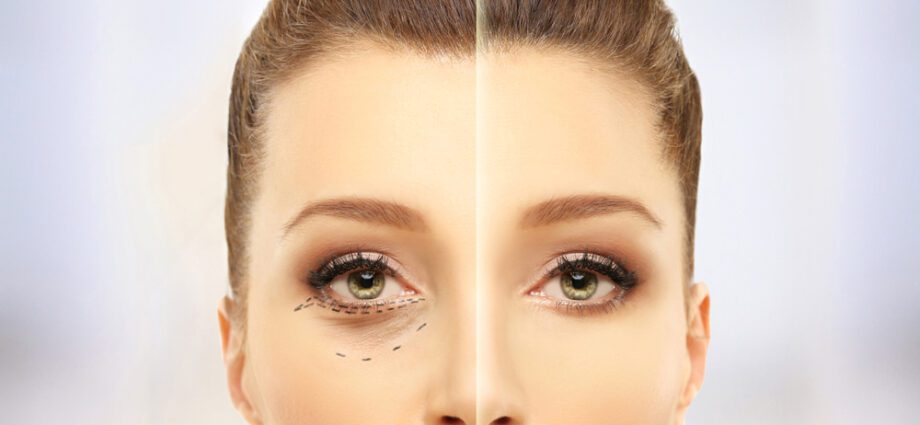Falling eyelid: all you need to know about ptosis
Ptosis is the medical term used when the upper eyelid falls over the eye. Also called palpebral ptosis or eyelid ptosis, it should not be confused with breast ptosis which corresponds to the sagging of the breast in women.
Ptosis: what is eyelid ptosis?
Sometimes called palpebral ptosis, eyelid ptosis or blepharoptosis, ptosis corresponds to a sagging of the upper eyelid. It can be unilateral when it occurs in one eye or bilateral when it concerns both eyes.
Falling eyelid: what are the causes of ptosis?
Ptosis is caused by damage to the levator muscle of the upper eyelid. Different structures can be affected: the muscle, its aponeurosis which corresponds to the fibrous membrane that surrounds the muscle, or even the nerve connections.
This attack can have several explanations. Depending on its origin and characteristics, ptosis can be considered as congenital ptosis, acquired ptosis or pseudo-ptosis.
Causes of congenital ptosis
Present from birth, congenital ptosis is usually caused by levator upper eyelid dystrophy, that is to say a morphological alteration of the muscle. This muscular dystrophy can occur in only one eyelid or both eyelids. It can also spread to other muscles, such as the upper rectus muscle, and cause other complications, including eyeball movement.
The causes of acquired ptosis
Unlike congenital ptosis, acquired ptosis is not present from birth. They are the consequence of a damage of myopathic, aponeurotic or neurogenic origin. This means that acquired ptosis may be due to damage to the levator muscle of the upper eyelid, its fascia, or its nerve connections. The sagging of the upper eyelid can be caused by:
- an aponeurotic deficit, an abnormality in the fibrous membrane surrounding the muscle;
- ocular myopathy, a neuromuscular disease that causes eye problems;
- a myasthénie, a neuromuscular disease that causes muscle weakness;
- third cranial nerve palsy, a paralysis that affects the oculomotor nerve;
- Claude-Bernard Horner syndrome, which is characterized by the combination of ptosis, miosis (retraction of the pupil) and anhidrosis (absence of sweat secretion), and caused by damage to the sympathetic innervation of the eye;
- relaxation of the levator muscle, which may be related to age.
The causes of pseudo-ptosis
While pseudo-ptosis is characterized by sagging of the upper eyelid, it is actually considered “false ptosis” because the levator muscle of the upper eyelid is not affected. Pseudo-ptosis is due to other alterations such as:
- a reduction in orbital volume ;
- excess skin on the eyelid ;
- hypotrophy of the eyelid, that is, anomalous development of the eyelid.
Drooping eyelids: what are the consequences of ptosis?
The sagging upper eyelid mainly causes:
- eye discomfort, with a decrease in the ocular field;
- aesthetic discomfort.
The consequences are nevertheless variable depending on the case. Indeed, unilateral or bilateral, a ptosis can be considered as:
- a minimal ptosis, when the collapse of the eyelid is not very visible and not very restrictive;
- moderate ptosis, which manifests itself as a half-closed eye and disturbs vision;
- major ptosis, which gives the impression of a totally closed eye and significantly reduces the visual field.
It is common for ptosis to be accompanied by other abnormalities in the eyes such as:
- Palpebrales give syncinésies eye-to-do Palpebrales, which correspond to abnormal and involuntary movements of the upper eyelid during movement of the eye or another area of the face;
- sensory abnormalities such as visual disturbances, in particular when the ptosis is accompanied by strabismus (problem of parallelism of the visual axis of the two eyes), astigmatism (anomaly of vision due to unequal curvature of the cornea), or anisometropia (inequality of refractive power between the two eyes);
- oculomotor abnormalities, especially when the ptosis is accompanied by strabismus;
- orbital-palpebral abnormalities, which can affect other structures in the eye such as the lower eyelid and eyebrows.
Droopy eyelids: what is the treatment for ptosis?
The management of ptosis is based exclusively on surgery. However, surgery is only considered under certain conditions. Its establishment depends mainly on the underlying cause. Surgical procedures also depend on the structures affected. The surgery can involve the levator muscle of the upper eyelid, its aponeurosis but also other muscles such as the Müllerian muscle, another muscle involved in the opening of the upper eyelid.










